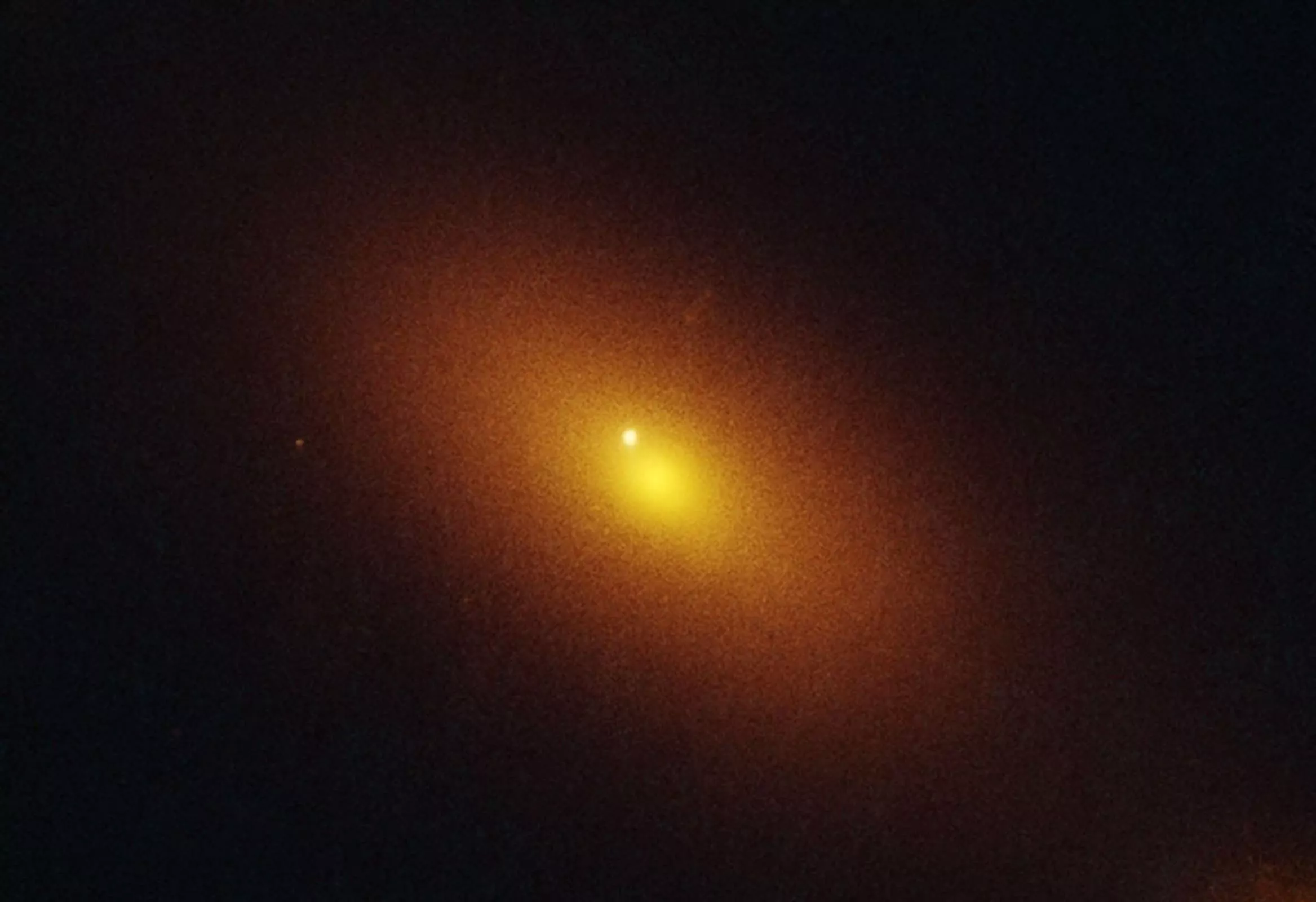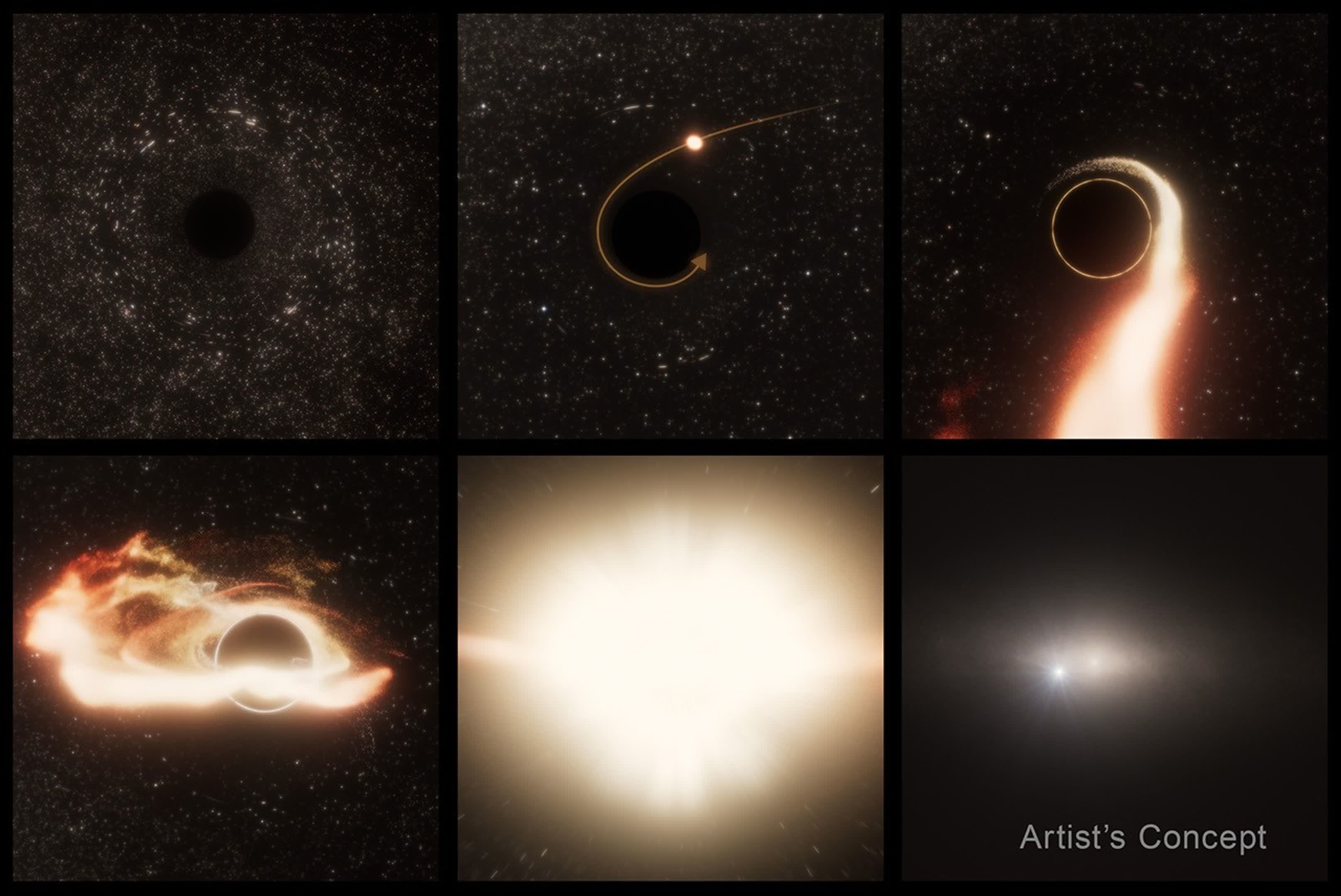Through the looking glass: The discovery of a supermassive black hole not only challenges assumptions about where these galactic giants reside but also demonstrates the power of combining observations across the electromagnetic spectrum. As new telescopes such as the Vera C. Rubin Observatory and NASA's Nancy Grace Roman Space Telescope come online, astronomers expect to uncover more of these elusive wanderers.

Astronomers have identified a supermassive black hole located on the outskirts of a galaxy 600 million light-years from Earth, where it was observed consuming a nearby star.
This extraordinary find, marked by a brilliant cosmic flare, has given scientists their first direct glimpse of a "wandering" black hole consuming a star outside a galactic center – a phenomenon never before observed.
The event, labeled AT2024tvd, was first noticed by the Zwicky Transient Facility at Caltech's Palomar Observatory, which surveys the northern sky every two days. The flare was as bright as a supernova, but its unique spectral signature: broad emission lines of hydrogen, helium, carbon, nitrogen, and silicon, revealing its true origin: a star being torn apart and devoured by a black hole.
This process, known as a tidal disruption event (TDE), occurs when a star ventures too close to a black hole and is stretched into thin streams by its immense gravity, a process scientists refer to as "spaghettification." The resulting debris heats up and glows in ultraviolet and visible light, creating a spectacular burst of radiation.
What sets AT2024tvd apart from nearly 100 other TDEs recorded by optical sky surveys is its location. Unlike previous events, which all originated from the centers of galaxies, this TDE was found 2,600 light-years from the galactic core. There, a much larger black hole – 100 million times the mass of the Sun – sits at the galaxy's center, actively consuming gas and shining as an active galactic nucleus.
This six-panel illustration by NASA shows a star being torn apart by a wandering supermassive black hole. First, the black hole drifts through a galaxy, detectable only by its gravitational influence. A nearby star gets caught in its intense gravity, stretched and shredded in a process called "spaghettification." The stellar debris forms a glowing disk around the black hole, which then begins to feed, emitting energy across the electromagnetic spectrum – from X-rays to radio waves. Seen from afar, the galaxy displays a sudden flash of light offset from its center, where a larger black hole resides.
By comparison, the newly discovered black hole is about one million times the mass of the Sun and is not gravitationally bound to its larger neighbor despite their proximity. This separation is only a tenth of the distance between our Sun and the Milky Way's central black hole, making the arrangement particularly unusual.
The detection of AT2024tvd was a collaborative effort involving several observatories. After the initial flare was spotted, astronomers used data from Pan-STARRS, the Sloan Digital Sky Survey, and the DESI Legacy Imaging Survey to catalog the host galaxy.
NASA's Chandra X-ray Observatory confirmed that the X-ray emissions were offset from the galactic center, and the Very Large Array radio telescope provided additional evidence. Ultimately, it was the Hubble Space Telescope's optical and ultraviolet precision that pinpointed the event's exact location and revealed its distinctively blue hue compared to the rest of the galaxy.
The presence of two supermassive black holes in one galaxy raises intriguing questions about their origins. One theory suggests that the wandering black hole was ejected from the galactic center through a gravitational interaction involving three black holes, with the lightest being flung outward.
Another possibility is that it is the remnant of a smaller galaxy that merged with the host galaxy more than a billion years ago. Although Hubble images show no direct evidence of a recent merger, the existence of a second supermassive black hole strongly hints that such an event occurred in the galaxy's past.
"There is already good evidence that galaxy mergers enhance TDE rates, but the presence of a second black hole in AT2024tvd's host galaxy means that at some point in this galaxy's past, a merger must have happened," explained Erica Hammerstein, a postdoctoral researcher at UC Berkeley who examined the Hubble data.
The black hole responsible for the TDE is usually invisible, only revealing itself every tens of thousands of years when it disrupts and consumes a star. After such an outburst, it returns to dormancy, waiting for its next cosmic meal.
Theorists have long predicted the existence of massive black holes away from galactic centers, but until now, none had been directly observed in the act of feeding. "AT2024tvd is the first offset TDE captured by optical sky surveys, and it opens up the entire possibility of uncovering this elusive population of wandering black holes with future sky surveys," said Yuhan Yao, the study's lead author.

